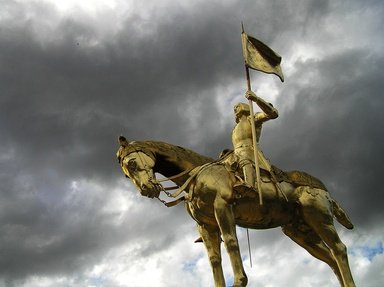Quiz Answer Key and Fun Facts
1. Joan of Arc's birthplace
2. The Maid waited here to gain the support of Sir Robert de Baudricourt
3. Where the Maid found one of her swords
4. Joan finally gained the support of the Dauphin here
5. The Maid's first battle
6. Where Joan saw Charles VII crowned
7. The Maid suffered a severe injury while sieging the former capital
8. City where Joan was captured by Burgundians
9. Burgundians held The Maid at this castle
10. Joan of Arc was put on trial and burned at the stake here
Source: Author
ponycargirl
This quiz was reviewed by FunTrivia editor
looney_tunes before going online.
Any errors found in FunTrivia content are routinely corrected through our feedback system.
